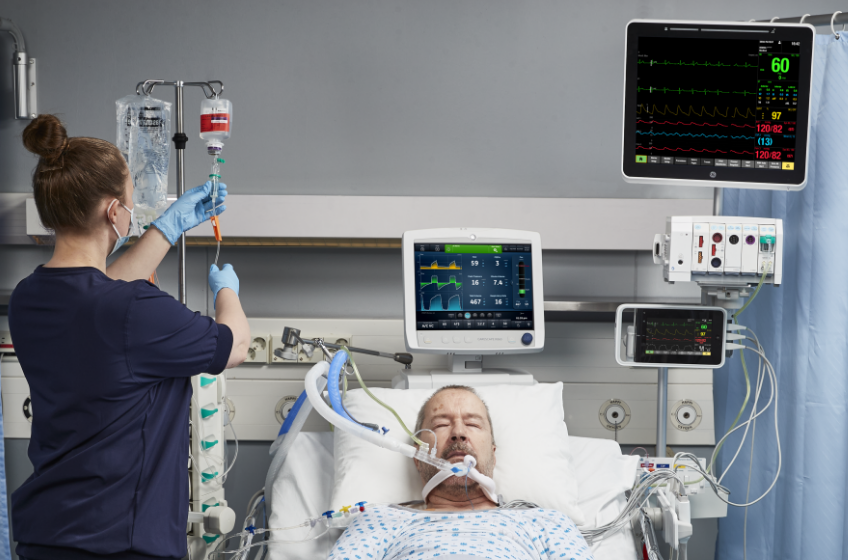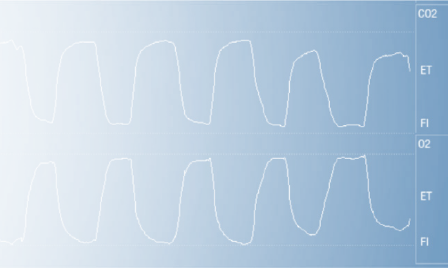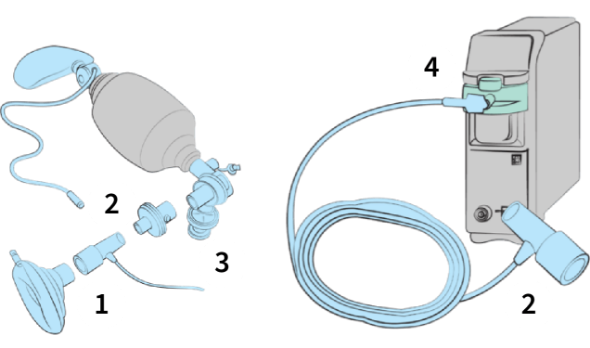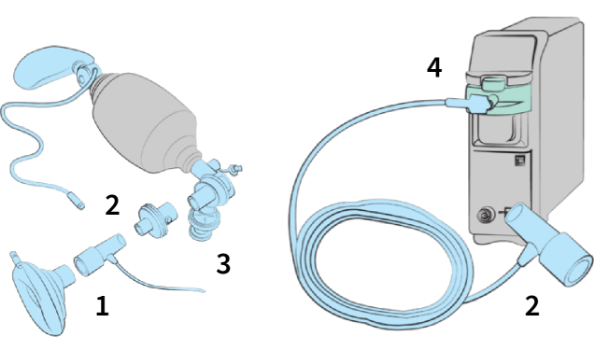Rapid Sequence Intubation (RSI)
in the ED
The importance of EtO₂ monitoring to support patient preoxygenation
RSI evidence shows significantly high rate of adverse outcomes in ICU and ED compared with anesthetic practice¹
Most common method of intubation of injured and critically ill patients²
Transient O₂ desaturation during ED RSI3,4
Desaturation in ED: RSI occurs in
1 out of 3 patients⁵
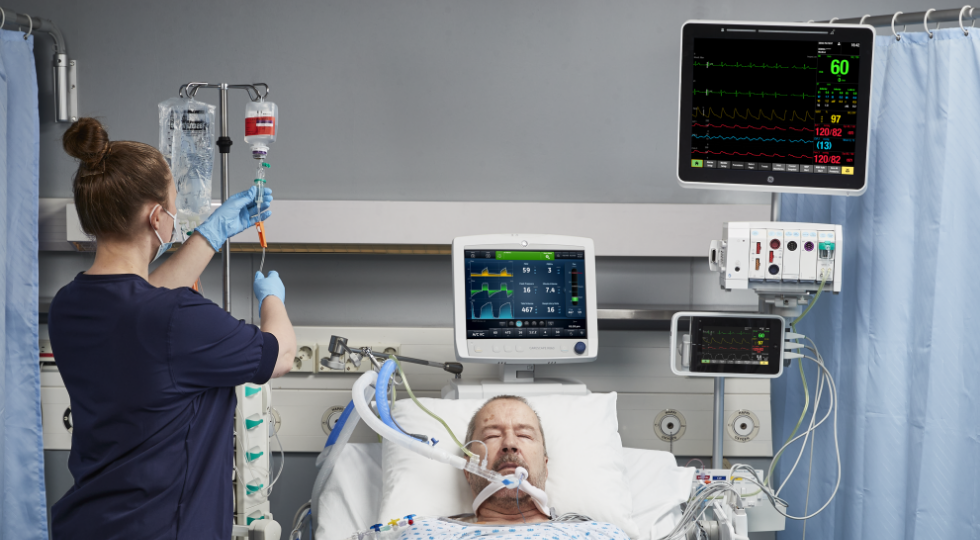
The NAP4 guidelines suggested standard monitoring for ED, ICU, WARD¹
End-tidal oxygen concentration
(when available)
Optimizing preoxygenation with EtO₂ Monitoring

Guidelines suggest critically
ill patients undergoing
RSI to be preoxygenated
until EtO₂ is >85%¹
Evidence⁶ demonstrated that during RSI:
20 % patients manifested desaturation SpO₂ <90 %
EtO₂<85%
Those patients did not reach EtO₂ >85 % at induction
The use of a gas analyzer to measure FiO₂ and EtO₂ can provide a reliable measure of patient oxygenation during RSI⁷
1. Bag mask valve (BMV)
2. Airway adapter
3. HMEF filter
4. E-sCO module
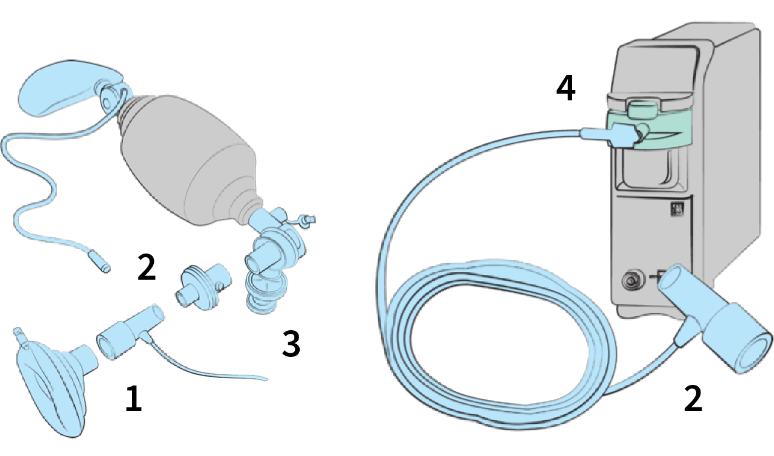
Higgs, A., et al., Guidelines for the management of tracheal intubation in critically ill adults. Br J Anaesth, 2018. 120(2): p. 323-352.
Walls, R., et al., Emergency airway management: A multi-center report of 8937 emergency Department Intubations. J Emerg Med, 2011. 41(4): p. 347-354.
Pourmand, A., et al., Pre-oxygenation: Implications in emergency airway management. Am J Emerg Med, 2017. 35(8): p. 1177-1183.
Reid, C., et al., The who where, and what of rapid sequence intubation: Prospective observational study of emergency RSI outside the operating theatre. Emerg Med J, 2004. 21:296-301.
Bodily, J.D., et al., Incidence and duration of Continuously Measured Oxygen Desaturation During emergency department intubation. Ann Emerg Med, 2016. 67(3): 389-395.
Caputo, N.D., et al., Use of End Tidal Oxygen Monitoring to Assess Preoxygenation During Rapid Sequence Intubation in the Emergency Department. Ann Emerg Med, 2019. 74(3): p. 410-415.
Murphy, S., et al., Novel Use of a Gas Analyzer Can Reliably Predict the Arterial Oxygen among
Emergency Department Patients Undergoing Rapid Sequence
Intubation. The Journal of Emergency
Medicine, 2020.
Not all products or features are available in all markets. Full product technical specification is available
upon request. Contact a GE HealthCare Representative for more information.
Please visit
www.gehealthcare.com. Data subject to change.
© 2023 GE HealthCare
GE is a trademark of General
Electric Company used under trademark license. All other trademarks are property of their respective
owners.
Reproduction in any form is forbidden without prior written permission from GE HealthCare.
Nothing in this material should be used to diagnose or treat any disease or condition. Readers must consult
a healthcare professional.
JB11222XX 12/2023
